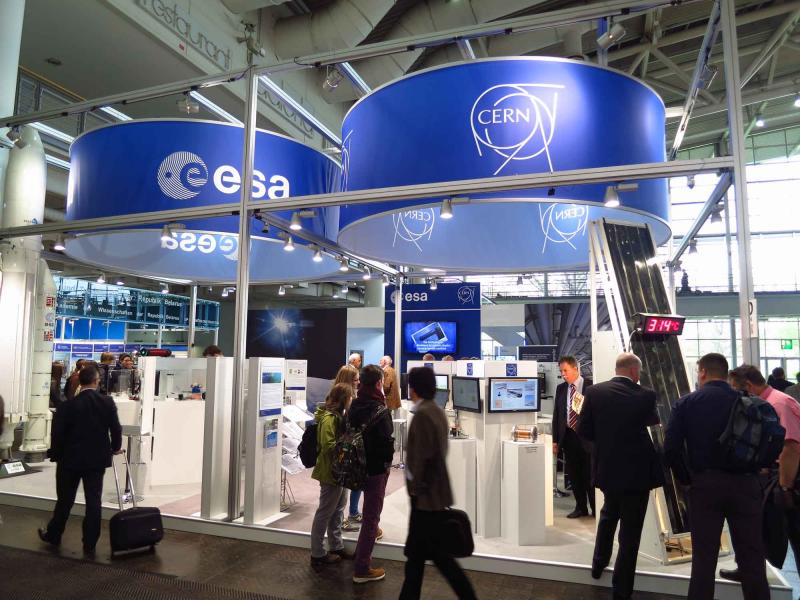This year at the world's largest industrial fair, the Hannover Messe, CERN and the European Space Agency (ESA) have teamed up to present their technologies. Some of the technologies developed by CERN could find applications in space.
In the planned upgrades of detectors on the Large Hadron Collider (LHC), electronics will come under intense radiation from high-energy particle beams. So electronics engineers at CERN have developed a power converter that can take a radiation dose of up to 7 million Gray and is not disturbed by single particle hits. Because power distribution is also an issue on spacecraft, the engineers – and CERN’s Knowledge Transfer group – believe that the converter could be useful in space.
Then there’s the problem of thermal management. Devices called collimators narrow the beams in particle accelerators. On the LHC they suffer intense heat, acting as "brakes" to strip particles from the edges of spreading beams. With the higher energies and intensities planned for the upgraded LHC, researchers are looking to improve on the carbon-based composite materials currently in use for collimators .
"The material [for the collimator] needs to be robust, conduct heat away quickly, have high geometrical stability and conduct electricity so as not to adversely influence the beam," says Alessandro Bertarelli, an aerospace engineer turned beam expert at CERN.

The possible solution: a molybdenum-carbide–graphite composite. "It has better electrical properties than the current collimators," says Bertarelli. "And its thermal conductivity is four times better – probably a world record for an engineered material." The composite is also quite light and very stable up to high temperatures – it could find a use on aircraft or in the harsh environment of space.
Another technology that could come in handy in space is related to surfaces in ultra-high vacuum. Particle beams have electric fields that can knock electrons from metallic surfaces around them. These electrons knock out even more electrons and so on. The process, called beam-induced multipactoring, forms an unwanted electron cloud that interferes with the beam.
Rough surfaces or coatings with particular chemical composition can mitigate this effect by reducing the number of secondary electrons produced. So engineers sometimes use special coatings – amorphous carbon, for example.
But mechanically rough surfaces can have drawbacks. "They are likely to increase the radiofrequency losses in microwave applications," says beam physicist Fritz Caspers. "So [a team at CERN is] looking at surfaces which are mechanically very smooth."
Instead of a surface that is rough in a mechanical way the CERN team invented a surface that is rough in a magnetic way. Tiny permanent magnets of alternating polarity applied just underneath the surface of high-frequency-carrying structures can trap secondary electrons. The technology reduces the secondary electron yield without the drawbacks of a rough surface.
Magnetic surface roughness could be used in particle physics, powering structures such as klystrons that use high frequencies. Spacecraft also suffer from efficiency losses due to stray electrons, and rough magnetic surfaces could be a basis of discussion for loss-free power transport in space.
The concept of magnetic surface roughness could one day find applications in radiofrequency systems on board satellites.
CERN and ESA recently signed a cooperation agreement. With so much overlap between technology for aerospace and particle physics, it's off to a good start.
Find out more about CERN technology transfer from CERN's Knowledge Transfer group
